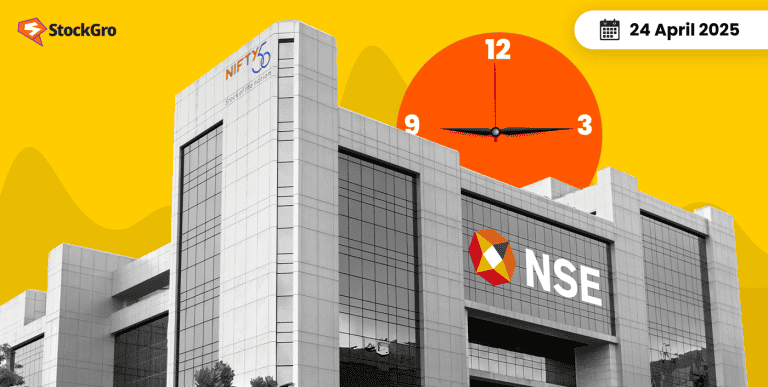
Ather Energy is a Bengaluru-based startup that has become a pioneer in India’s electric two-wheeler space. It was founded in 2013 by Tarun Mehta and Swapnil Jain, two IIT Madras grads with a vision for sleek, tech-loaded e-scooters.
Early on, they caught attention (the Flipkart founders even invested seed capital) and developed their first scooter prototype by 2016. Today, Ather is known for premium electric scooters like the Ather 450X and the newer Ather 450S and 450X Pro, often touted as the “Apple of electric two-wheelers” for their smart features.
Ather didn’t stop at making cool scooters – they also built Ather Grid, a nationwide charging network for EV users. This holistic approach (product + charging + apps) helped Ather cultivate a strong brand among tech-savvy urban riders.
Fast forward to 2024, Ather had sold over 1.09 lakh (109,577) electric scooters in FY 2024 alone. It now holds about 11.5% of India’s e-scooter market, making it the country’s fourth-largest E2W (electric two-wheeler) player. In short, Ather grew from a college project into a leading EV contender in just a decade.
Also read: IndusInd Bank shares dip 6% on audit
Why is Ather going public?
After years of rapid growth (and heavy investments), Ather is revving up for its stock market debut. Why now? Primarily, to raise fresh funds for its next phase of expansion and innovation.
As a startup, Ather has relied on venture capital and big backers (like Hero MotoCorp and Tiger Global) so far. An IPO allows it a chance to raise a large amount of capital from the public to fuel future growth. It also provides a partial exit for early investors who’ve ridden with Ather since the beginning; the founders and a few investors will sell a small portion of their shares in this IPO, cashing in on years of growth.
Another reason is visibility and credibility. Being a publicly listed company can boost Ather’s profile and trust among customers and partners. It’s the first mainboard IPO of FY 2025-26, kicking off the IPO season, which signals confidence that the market is ready.
That said, Ather trimmed its IPO size and valuation by about 44% from initial plans due to volatile market conditions. This caution shows that while Ather wants to go big, it’s also mindful of investor sentiment in a choppy market.
How will IPO funds be used?
Going public isn’t just about raising money, it’s about how that money will be put to work. According to Ather’s prospectus, the company has clear plans for the fresh funds it will receive from the IPO:
- New factory in Maharashtra: Around ₹927 crore will go into setting up an electric scooter manufacturing plant in Maharashtra. This will boost production capacity and help Ather meet growing demand (and perhaps bring down waiting times for buyers).
- Research & Development: About ₹750 crore is earmarked for R&D efforts. This means Ather can design new models, improve battery tech, and stay ahead of the curve with better performance and features in its scooters.
- Marketing & Expansion: Roughly ₹300 crore is allocated to marketing and expanding Ather’s presence. Expect to see more Ather showrooms, service centres, and ad campaigns as the brand tries to win over more young riders in India (and maybe even abroad in the future).
- Debt repayment: A small portion, about ₹40 crore, will be used to pay off some loans. Paying down debt will strengthen Ather’s balance sheet and save interest costs, which is always a good thing for a company that’s yet to turn profitable.
- General corporate purposes: Any remaining funds will be used for general needs as they arise, giving Ather a financial cushion.
By using the IPO money in these areas, Ather aims to turbo-charge its growth, increasing production, fostering innovation, and building its brand. Essentially, the IPO proceeds are the fuel for Ather’s next lap in the EV race.
Current company performance
Like many fast-growing startups, Ather has been scaling up sales rapidly but is still making losses. Here’s the snapshot: In FY 2023, Ather’s revenue shot up to about ₹1,780.9 crore, a huge leap from the previous year’s ₹408.9 crore. However, expenses were high, resulting in a net loss of ₹864.5 crore in FY 2023.
In the latest fiscal year, FY 2024, revenue was roughly flat at ₹1,753.8 crore (a slight 1.5% drop), and net losses widened to ₹1,059.7 crore. The dip in revenue growth in FY24, despite selling more scooters, could be due to pricing adjustments or subsidy changes, but it shows Ather’s top-line momentum paused a bit.
On a positive note, FY 2025 is looking better so far. In the first 9 months of FY25 (Apr–Dec 2024), Ather clocked ₹1,578.9 crore revenue, a 28% jump over the same period of the previous year. Net loss for those 9 months narrowed to ₹577.9 crore from ₹776.4 crore the year before.
This suggests Ather’s push with the new Rizta scooter and cost controls might be slowly improving the financial picture. The company still has to prove it can eventually profit, but investors consider that losses are not growing endlessly and revenue is on the rise again.
You may also like: Alok Industries breaks losing streak after Q4 results
Key Financials (FY 2022–2024)
To put Ather’s financial trajectory in perspective, here are some key numbers from the last three fiscal years. Despite losses, revenue growth until FY23 was explosive. All figures are in ₹ crore:
| Financial Year | FY 2022 | FY 2023 | FY 2024 |
| Operating Revenue | ₹408.9 cr | ₹1,780.9 cr | ₹1,753.8 cr |
| Net Profit (Loss) | –₹344.1 cr | –₹864.5 cr | –₹1,059.7 cr |
| Total Assets | ₹818 cr | ₹1,977 cr | ₹1,914 cr |
Despite the losses, Ather’s management emphasises that the newer scooter models and the expanded production should help move towards profitability in the future. Investors in the IPO will be betting that this high-growth trajectory can eventually translate into profits once the initial expansion phase is over.
Ather Energy IPO details
Here are the key details of the Ather Energy IPO that potential investors (especially first-timers) should know:
| IPO Detail | Information |
| IPO Opening Date | April 28, 2025 |
| IPO Closing Date | April 30, 2025 |
| Issue Type | Book Building (Mainboard IPO) |
| Price Band | ₹304 to ₹321 per share |
| Lot Size (Minimum Order) | 46 shares per lot (₹14,766 at upper price) |
| Fresh Issue Size | ₹2,626 crore |
| Offer for Sale (OFS) | 1.105 crore shares (≈ ₹355 crore at upper band) |
| Total Issue Size | ~₹2,981 crore at upper band |
| Listing Date (Expected) | May 6, 2025 |
| Exchanges | NSE and BSE (India) |
| Face Value | ₹1 per share |
| Minimum Investment | ₹14,766 at upper price |
Shareholding pattern: Pre-IPO vs Post-IPO
One big change an IPO brings is in the ownership distribution of the company. Here’s how Ather Energy’s shareholding pattern shifts from before the IPO to after the IPO:
| Shareholders | Pre-IPO Holding | Post-IPO Holding |
| Promoters (Founders + Hero) | ~51.8% | ~35.6% (after dilution) |
| Non-Promoter Shareholders | ~48.2% | ~64.4% |
Pros and cons of investing in Ather energy IPO
Let’s summarise the potential upsides and downsides of investing in the Ather Energy IPO:
Pros:
- Pioneer in a High-Growth Sector: Ather is a leading player in India’s EV two-wheeler market, which has huge growth potential as consumers shift to electric. Investing now is an opportunity to join the EV wave early.
- Strong Brand and Product Ecosystem: Ather’s scooters are well-regarded for quality and tech. The company also built a charging network and software services, creating an ecosystem that competitors might find hard to match. This could translate to customer loyalty and pricing power in the future.
- Backed by Stalwarts: Having Hero MotoCorp (30% post-IPO) as a major shareholder provides industry support and credibility. Other institutional backers like GIC and NIIF sticking with Ather (only trimming stakes lightly) indicate confidence in the company’s prospects.
- Improving Financial Trends: While Ather is making a loss, its recent financials show improvement – losses are narrowing and revenues are rising again. The funds from the IPO, deployed into expansion and R&D, could accelerate the path to profitability if all goes well.
- Government EV Push: The Indian government’s policies are increasingly EV-friendly (e.g., FAME subsidies, state EV policies). Such support can indirectly benefit Ather through increased consumer incentives to buy EVs, helping Ather’s sales grow.
Cons:
- Continued Losses and Uncertain Profit Path: Ather has never made a profit since inception. Cumulative losses are large, and even after the IPO cash infusion, there’s no guarantee when (or if) the company will break even. Investing in Ather requires faith that profits will come in the future, a classic high-risk, high-reward scenario.
- Stiff Competition: The EV two-wheeler space is getting crowded and competitive. Ather faces startups like Ola Electric and legacy giants like TVS and Bajaj who are launching EV models. These rivals have deeper pockets and established distribution. If Ather cannot fend off competition or if competitors undercut on price, it could hurt growth and margins.
- Valuation is Rich: Even after cutting the valuation by ~44%, the IPO pricing values Ather at nearly ₹12,000 crore, which many feel prices in a lot of future success. Any stumble in execution – say, delays in the new factory or lower-than-expected sales could cause the stock to underperform. Essentially, there’s not much margin for error at this valuation for a loss-making firm.
- Market volatility: The stock market has been volatile due to global factors (Ather even cited U.S. tariff policy flip-flops as a reason for IPO timing issues). Investor appetite for risky IPOs can dry up quickly if sentiment turns. Ather’s IPO is happening amidst these conditions, so external market swings could impact its listing performance regardless of its business strength.
What are experts and brokers saying?
The buzz around the Ather Energy IPO is understandably high – it’s a well-known EV brand and part of a trendy sector. However, expert opinions on whether one should “subscribe” (buy) or “avoid” the IPO are mixed and cautious.
On one hand, EV sector optimism works in Ather’s favor. The company is a front-runner in the electric scooter market, which is expected to boom as India shifts away from petrol vehicles. Some analysts point out that Ather has a proven product, a loyal customer base, and experienced backers. They argue that if you believe in the long-term EV revolution, investing in a leading EV manufacturer at an early stage could be rewarding.
On the other hand, valuation and profitability concerns are weighing heavily. At the upper IPO price, Ather will be valued around ₹11,956 crore, which is quite high for a company that lost over ₹1,000 crore last year. Many investors are cautious, suggesting a “Neutral” or “Avoid” stance for short-term investors.
You may also read: ICICI Bank Q4 results key takeaways
Conclusion:
The Ather Energy IPO presents a classic dilemma – it’s an opportunity to invest in a cutting-edge EV startup with a great story, but it comes with significant risks due to the financial losses and competition. Assess your own risk appetite. You don’t have to participate in the IPO , you can always wait and watch how the company performs and pick up the stock later if convinced.
Whether you choose to subscribe or sit out, the journey of Ather Energy will be exciting to watch. It’s not just another IPO; it feels like a milestone for India’s EV ecosystem, and in a way, everyone buying an Ather scooter or its stock is contributing to that green future. If you do invest, buckle up and enjoy the ride – just as you would on an Ather 450X!

